They say that it’s not you who chooses a hobby, but it’s the hobby that chooses you. That is why when embroidery bug strikes your creative self, just relax and enjoy this beautiful notion. Because, we promise, you’ll love every bit of it. But as all beginnings are hard, don’t be discouraged, if at times you’ll get a tat overwhelmed by all those new terms and questions about techniques. It’s only natural at this phase to constantly be looking up different things.
- Where do I start?
- Which embroidery machine is better to buy?
- What materials will I need for my future embroidery projects?
- Which manufacturers should I trust?
If, among others, these questions makes your head go round, than you’re reading the right article. To make the start easier, we’ve gathered basic highlights, potentially useful for every embroidery novice.
Introduction to Machine Embroidery
So, you’ve decided to try yourself in machine embroidery art. That is great! It’s a creative, inspiring and really useful decorative craft. You can do myriads things with your wardrobe and home décor. At least you think you can, because you’ve seen others do them, right? Yes and no. The time when the answer will be a solid “Yes” will come, but first you need to learn. And our advice here is to do small steps every time.
There’re three basic components to machine embroidery: your skills, the machine and consumables (designs, stabilizers etc.) We’ll speak about skills through designs and the machine.
So, first of all, start with simpler designs. Decorative Elements or Blank Monograms series are good choices for beginners. These designs don’t have many color changes and the stitch numbers are not so high. That is why working with them is a really fun way to build up your confidence and embroidery skills. Besides, such a “light” start will help you understand your embroidery machine better, learn what it can and cannot do. Up the level of difficulty of your embroidery projects gradually to know what “extra hardware” (needles, hoops) you might need for your work. This will save you money in the long run, keeping you from spending fortunes on unnecessary one-time frills. So as we’ve come to the actual embroidery machine topic, let’s speak about it in detail.
Embroidery machines: overview
Whether you embroider for pleasure or you want to start your own embroidery business, you’ll need an embroidery machine. They can be different: household and industrial, single-head and multi-head. How not to get confused in this technological abundance?
Obviously, the choice of the tool depends on the direction of work. We will explain through an example. Let’s say you decided to choose a design from Animals category. In our case, the important aspect is the size of the hoop (the size of the working field). The bigger is the hoop (working field), the more precise will be the picture. With the hoop of a larger size the portrait of the animal will have better detailing. So if you think you’re going to focus mostly on designs of this type, opt for embroidery machines with larger hoops.
Then, there’s stitching number. Some machines have certain limits in this respect. So if designs which you embroidery usually have dense stitching, than buy a machine with the according capacity. But to know exactly, you have to embroider first. You’ll have to try various types of designs, gradually upping their complexity. Keep in mind that, once you buy an embroidery machine and start choosing designs for it, you might get hooked.
We have prepared a list of questions for you. They will help you decide on the type of embroidery machine, which you actually will need. So before buying one, read the list below.
1. What is the largest size of an embroidery design (physical inner size) this embroidery machine can manage?
2. How many hoops and additional accessories come with the purchase?
3. What type of screen does the machine have? Is it a touch-screen or not? (Because, generally, touch-screen is easier to navigate)
4. Is there an option to combine several designs on the screen?
5. Is it a sewing machine too?
6. Does the store you are buying from provide technical support?
General rule of thumb with embroidery machine goes like this: models with lesser cost have smaller hoops. So if you know for sure that you’ll need larger hoops, it might be worth investing in a more expensive or even industrial embroidery machine. Besides making the embroidery process easier, such industrial units have another great asset – the speed.
If the abovementioned is not so crucial for your particular type of work, don’t splurge on the most expensive model there is. Small household embroidery machines are perfectly fine, especially for beginners. They are “good teachers” who will willingly help you build your embroidery skills.
When buying an embroidery machine, check with dealer where you can watch video tutorials on how to use this particular machine. Read your embroidery machine’s manual AFTER you’ve seen the online tutorial videos – it will make more sense!
Now that you’ve asked yourself all these questions, you have a better picture of what you actually need. Don’t forget that, besides the embroidery machine you’ll also need a computer to download your designs and transfer them to the embroidery machine.
So you’ve settled the question about the embroidery machine. Now it’s time to move on to the consumables. In the following passages we’ll outline basics on fabrics, threads, stabilizers and embroidery programs.
Which fabric should you use?
This will depend on the project itself. There’re so many variations that it’s pointless to discuss all of them. There’s however one thing obligatory for all types of fabrics – it is their “smoothness”. No matter what is the character of the project or of an actual machine embroidery design, always keep in mind that FABRIC SHOULD BE WRINKLE-FREE. If it’s not, iron it before.
What about embroidery threads?
There are two types of thread used in machine embroidery: Rayon and Polyester. For beginners we recommend to start with less expensive embroidery threads. Why? Well, because you’re still learning how to embroider images, motives and Ornaments. Before you can choose colors and sizes without making any mistakes you’ll undo hundreds of coils of embroidery threads. So why waste expensive threads for mere practice? Instead, use something more economical, like embroidery thread of Chinese manufacturer. When you feel that you’ve became more proficient, switch to high-quality embroidery threads, such as Madeira’s or even Gounod.
What are stabilizers?
Stabilizers are one of the most mysterious consumables in machine embroidery art. You will need to be able to distinguish them just like fabrics, in order to choose the right pair of stabilizer and fabric suitable for each particular project. You’ll need to learn characteristics of each type of stabilizers and how they endure not only during the process of embroidery, but afterwards too.
And now we came to the part where we talk about embroidery programs. Without good knowledge of machine embroidery programs and image editors, like Wilcom, Embird or PE – design, you will not be able to make even a stitch. Be patent while learning your ropes with embroidery software, for it might take some time. And as practice shows, it’s not the most exciting thing ether. But eventually you’ll be through with theory. And the actual embroidery practice will give you so much joy, that you won’t be sorry for any of the hours you spent.
Why not celebrate beginning of your embroidery venture in royal style? Start your creative embroidery projects with designs of Royal-Present Embroidery. Wide range of styles, suitable for beginners and accomplished embroidery artisans, is renewed, replenished and increased almost every day. Choose from simple to elaborate machine embroidery designs to make unique decorative items for you and your friends. We offer ornamental designs in Greek, African, Chinese styles as well as embroidery motives for holidays, monograms and more. Get subscribed to our news letters to always be informed on new arrivals in our shop.
Machine embroidery starter kit
Now that we discussed how a beginner should approach major topics in the machine embroidery art, let’s move on to things which are absolute musts for every embroiderer. Below you’ll see the list of essentials, without which you cannot begin.
– Scissors
– Embroidery machine
– Fabric to embroider on
– Ready designs for machine embroidery
– Pins
– Stabilizer (with stabilizing spray)
– Hoop
– A lot of time
All of these things are very important. But what’s even more important than just having them is actually being able to use them in practice. Also it would be nice to know what you can embroider on an embroidery machine. So let’s start off with that.
What is better – DIY design development or a purchase?
So you have the needed tool in your hands. And of course you are burning with desire to get down to work. But you lack the most important thing – the idea, the motive, the design. Here you need to decide whether you want to study the design of machine embroidery or get some beautiful, read-made patterns in a shop.
Major advantage of Do-It-Yourself “way” is that with it you become the sculptor of your own invention. Theoretically, mastering a program for creating embroidery designs allows you create any project the way you see it in your head. But bear in mind that embroidery machines do not work like printers or scanners. It’s impossible to just complete the process in one second.
The program or embroidery design is created with the help of a specific type of software, operated by highly qualified specialists called digitizers. Only professional digitizers can make good-quality machine embroidery designs. This means that for an armature this task will be more than just daunting. The time and effort put by a rookie in such a demanding work will be unreasonably huge. So why bother if you can easily purchase what you need from a store?
Pros of ordering machine embroidery designs online
1. You don’t have to spend endless hours studying the perks of embroidery designing software. There’re specialists with experience and knowledge exactly for this task.
2. Experienced digitizers take into account all the minute details of embroidery project creation. This includes issues which might occur with the program in the embroidery machine; possible complications caused by wrong threads, stabilizers or fabric. Professionals deal with such things even before they occur, so that an embroiderer might enjoy the creative process without a hitch.
3. Looking for individuality? You can place an order for making an embroidery program based on your own ideas. Experts will create an embroidery design which will look good not only on the screen, but in the actual finished project too.
4. Embroidery designs, made by specialists, comply with machines of most major brands, including Brother, Toyota, Jack, Feiya, SWF and others.
5. Each machine embroidery design undergoes thorough testing to make sure it will look good in practice. Only after the results are confirmed to be satisfying can it be listed on catalogues.
6. A competent online shop puts special emphasis on accessibility of its products to every embroiderer. That is why designs, offered by Royal-Present Embroidery are available in most of the common digital formats, including PES, BIN, EMB, DST, JEF etc.
Embroidery styles presented in our catalogue
Main advantage of machine embroidery over its manual counterpart is the possibility of creating an unlimited number of products in a much shorter period of time. But it’s not the only one too. Techniques available in machine embroidery are more diverse than in manual, and here in Royal Present we use almost all of them.
Get inspirational ideas for your new embroidery projects with our collections of FSL and Richelieu designs. And for those who are looking for something extraordinary there’re designs of machine embroidery with combination of rhinestones. Take a closer look at beautiful array of embroidery patterns and styles this page.
On pages of our catalogues you’ll find designs of every manner and style. Go through the list of the categories below to get the idea:
– In the category Lace there are files made in the FSL (Free Standing Lace) technique. Besides FSL, there’re also other types of lace, including ones imitating hand crafted lace.
– Our machine embroidery designs in Richelieu technique section boast most beautiful openwork patterns, trimmed with a smooth stitching only machine can make. Clothes and household textiles, decorated with our Richelieu designs have exquisite air of rare finesse. Don’t forget about this category when preparing textiles for weddings.
– Cats, Horses, Bears, Fruits, Flowers – all these designs can be downloaded from the sections Animals, Birds and Floral Designs.
– Cute, adorable and lovely as fairytale dreams… Such decorative motives can be found in the section for Children – beloved cartoons characters and mighty superheroes jumped right from bright TV-screens into our Children collection. They can jump again on your child’s clothes should you press Yes, I Want It button.
– The category of Graphic will share with you artistry of modern realism. Contemporary patterns and ornaments will make you fall in love with their impeccable styles at the first glance. Designs made in Photo stitch techniques are worth your attention too. Typically, such embroidery patterns take a fairly long time to be completed. Since the area of stitching is very large the amount of stitches is large too. Also, embroidery in this technique requires threads in a greater variety of color spectrum. But results are always breathtaking. Photo stitching might be a bit challenging for an absolute beginner. So it would be a good idea to try your hand in, say, category, first.
– Fonts, Alphabets first – coats of arms, emblems and symbols. If you want to add a bit of aristocratic nobility to your projects, this category is for you. There you can also find variety of designs for embroidering chevrons, insignia and even flags.
– In Holiday section you’ll find designs which will make many festivities, holidays and celebrations a bit brighter and merrier. Beautiful ideas for holiday gifts – New Year’s designs, Easter gift items and others are also hiding there.
– Logos and emblems. With designs from this category you can “steal” a bit of glory from the big-names around the block. Famous designs and symbols, well-known brands – what else can inspire you?
– Download floral and graphic designs from our Ornaments section. There you can also find classic, Vintage, Greek and oriental patterns.
Sizes of designs are given in their description. But if you want to adjust it to your own individual project we can make it happen. Royal Present Embroidery offers resizing service, when the pattern of the designs allows such a procedure. Also you can ask for designs to be divided into parts to fit the size of your hoop.
History of Machine Embroidery
Machine embroidery is a relatively young art. The very first embroidery machine was French. No surprise here, since France has always been innovative in everything concerning fashion and apparel. Probably that is why, from the year of its “birth” in 1821, an embroidery machine needed only 2 more years to win its own niche in the market. At the exhibition of 1854, great excitement, caused by revolutionary Heilmann embroidery machine spurred the development an entire industry.
Another great step in the development of the art was the invention of machine tools with programmed control. Embroidery process of that time was performed by an automatic machine with the hoop moving according to the program laid in paper punched cards. Holes in these cards were arranged in a certain order. Punched cards were used until the seventies of the twentieth century.
Nowadays embroidery patterns are designed on a computer connected to the embroidery machine. A machine embroidery design is nothing but a computer program. Embroidery machine need to read this program to transfer the digital pattern on the actual fabric.
Machine embroidery designs can be processed by various embroidery editors and stored in files of various embroidery formats. Most common formats are FDR (Barudan), ART (Bernina), EMB, DST, PES (Brother), HUS (Husquarna), JEF (Janome ), etc.
Today, the demand for machine embroidery is on the rise. It is easily explained by the fact that it’s more efficient than traditional hand embroidery. Besides, the equipment itself has more applications than just the embroidery per se. Sounds like magic, doesn’t it? But the real picture is less magical. Read the myth-busting info below to understand machine embroidery better.
Myths about machine embroidery, which you must read
On paper, or shall we be modern and say on video tutorials, machine embroidery is very simple. You upload a design in your machine, hoop some piece of fabric and press the magical button. That is it. Is it, really though? Of course not! To make it look like a piece of cake, one needs knowledge, experience and a great deal of patience. Practice here is the mother of skills, and mistakes are the teachers. And the rest of it is based on false believes and common myths. So, to make the picture a bit clearer, we decided to debunk some of the myths. But enough of the theories! Let’s actually read them.
Myth #1You don’t have to test new files. It’s a waste of time and consumables.
Wrong! Testing new designs allows you to see and correct potential errors in the program. It also gives you a more precise idea of what stabilizers should you use. Plus it gives you time to adjust your equipment before the final product is embroidered.
Myth #2To test a file you can use any leftover fabric, random threads, stabilizers and needles.
Never! It’s a common mistake for every beginner. Not knowing how important it’s to take into account qualities of each of the embroidery components, one assumes that anything will do. The truth, however, is that if you change one of the components, say, a type of a thread or a stabilizer, the result changes as well. The tread might break or stitching will not be as even. That is why it’s advisable to pay attention to every detail. It will save you time, stress and lots of otherwise wasted materials.
Myth #3In the process of embroidery there is frequent breakage of the thread, needles and so on. This happens due to problems in the program of the design.
Not always. The problems could be not of the “digital” origin only. Poor-quality consumables and technical condition of the embroidery machine might also cause issues in work.
Myth #4During the winding, you should always stretch the fabric as much as possible.
More or less true. If the fabric is overly stretched during the dowel, then after embroidery, it will want to return to its original state. This causes puckering, wrinkling – you name it. And this damage cannot be removed. So use your common sense when stretching the fabric into the hoop. However, this rule does not apply to those textiles that will be worn in a stretched condition.
Myth #5
All machine embroidery files can be resized.
Not always. There’s limit in resizing for non-editable files. You can increase or decrease non-editable files only by 5-10%. Usually this percentage of scaling guaranties that the quality of the program will not change significantly.
Myth #6
The most important, in our opinion.
Theoretical knowledge acquired from books and tutorials is enough to master machine embroidery art.
Not even close! Machine embroidery is a practical science. Without tests, alterations in approaches, failures and mistakes you’ll never build proper skills in machine embroidery craft. Theoretical knowledge is only basis. You need to put some of your own elbow in every written or spoken word. Even if these words come from “the experts”.
Myth # 7
To master machine embroidery one must be able to sew.
Well, here the truth lives happily on both sides. Sure it’s helpful if you now basics about sewing. It is, however, not absolutely necessary, especially in the beginning. Embroidered napkins and towels do not need sewing skills. You just need the textiles, stabilizers and embroidery designs, like the ones in our Decorative Corners collection. Later, when you’ll want decorate, say, a pair of jeans, you probably will need to learn how to sew. Same goes for embroidering quilts. When time comes to these gorgeous bedding creations, do check out our Quilt Square collection.
So now that major myths are discussed we’re sure, that you are better prepared for you new embroidery aspiration. Now the only thing that is left is to find a beautiful machine embroidery design to make a beautiful start. In our catalogues you’ll easily find the one, perfect for you, your tastes and your skills. Look for inspiration for your future decorative projects on Royal-Present online store. Embroidery for clothes and accessories, souvenirs and gifts, decorative motives for household textiles and so many other creative ideas are waiting for you on pages of our catalogues. What will you embroider first? Get inspiration here.
You may also like
Machine Embroidery Design Heart of roses – 3 sizes

Author: Ludmila Konovalova
My name is Ludmila Konovalova, and I lead Royal Present Embroidery. Embroidery for me is more than a profession; it is a legacy of my Ukrainian and Bulgarian heritage, where every woman in my family was a virtuoso in cross-stitch and smooth stitching. This art, passed down through generations, is part of my soul and a symbol of national pride.
Date: 14.09.2017
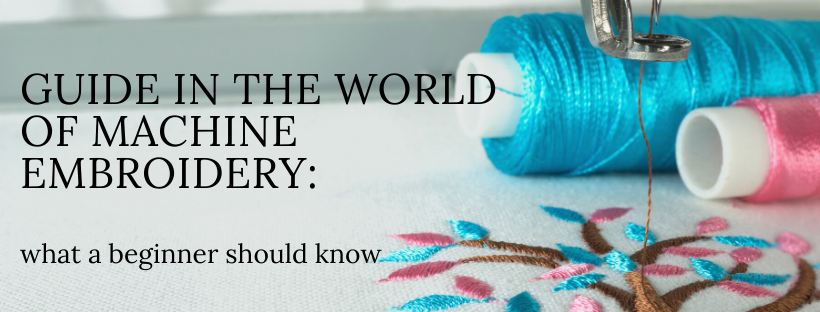
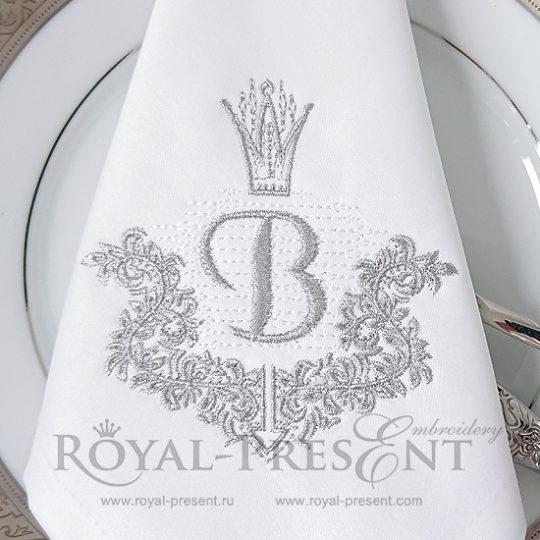
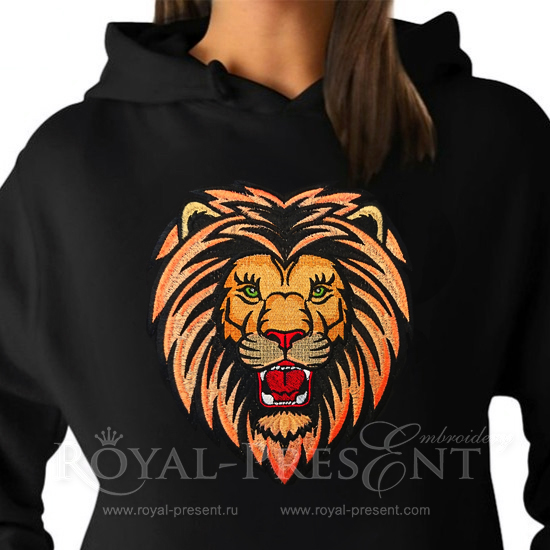

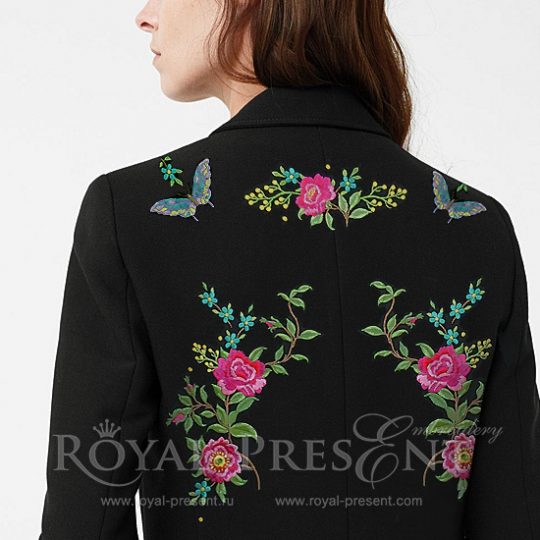
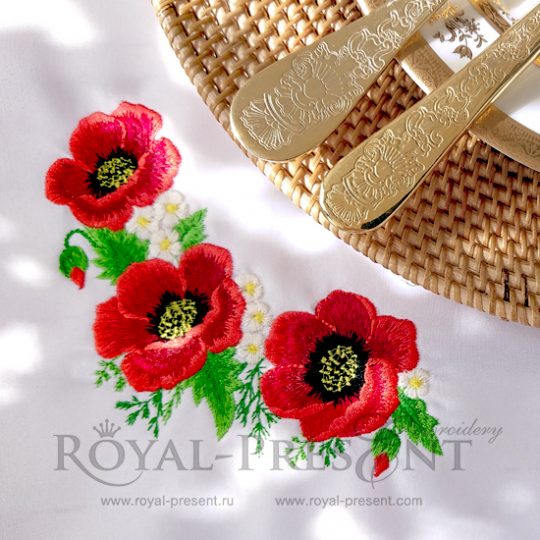

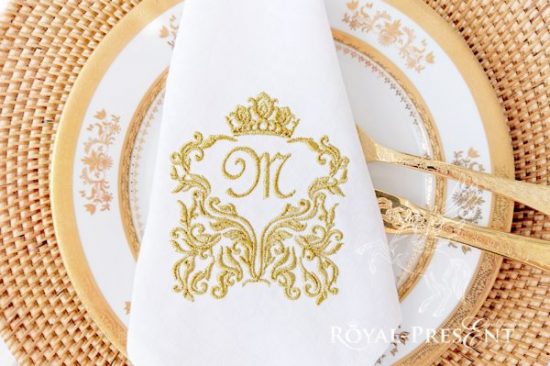
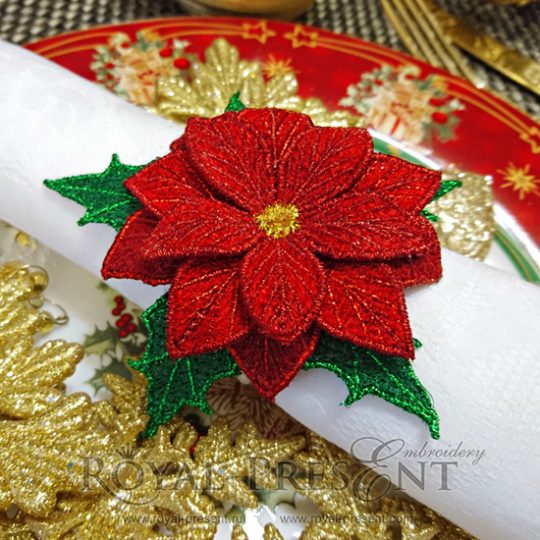
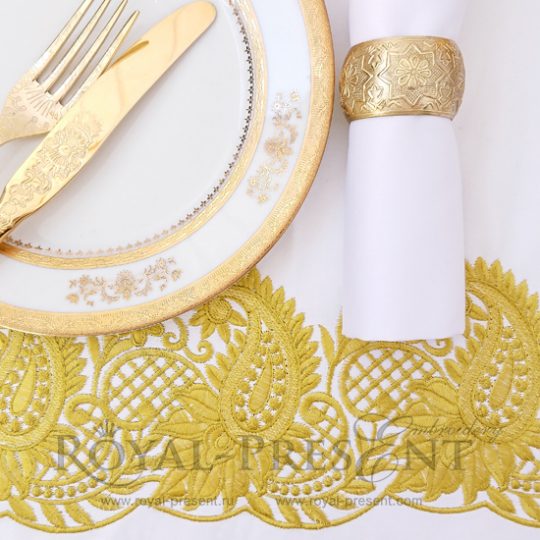

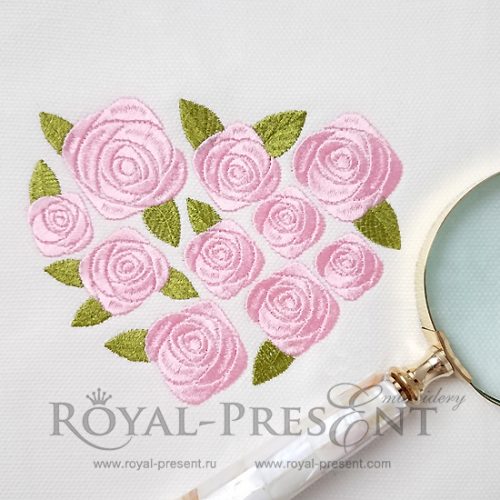

 Get Sign-In Link
Get Sign-In Link Login with Google
Login with Google Login with Facebook
Login with Facebook Login with Amazon
Login with Amazon Login with Paypal
Login with Paypal